What exactly are ice caves, and where can you see them when visiting Iceland? Where can you learn more about ice caves while staying in Reykjavík? Read on to find out all you need to know about ice caves, and other wonders of nature, in Iceland.
Iceland has its name for a reason. Over 11% of the landscape is covered by gargantuan sheets of ice known as glaciers (or jöklar in Icelandic).
Many are so large as to overwhelm the mountains and valleys beneath them. One good example is Vatnajökull ice cap in South East Iceland, which covers the country’s highest peak, Hvannadalshnjúkur.
Despite the country’s volcanic core, frozen water has been an integral part of the island’s landscape since long before its initial settlement.
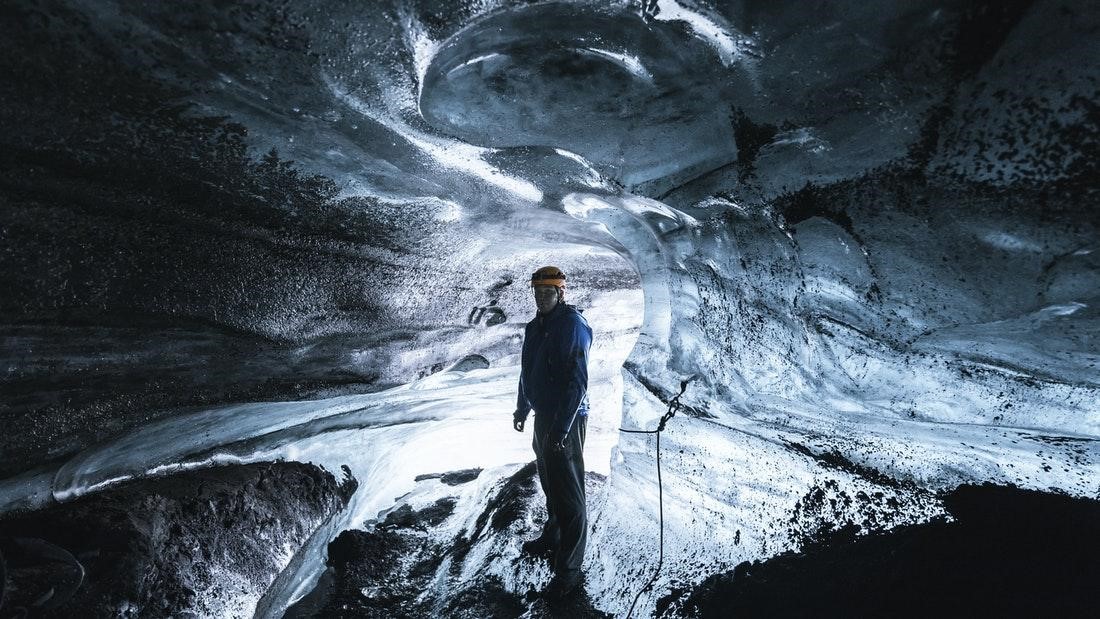 Source: Katla Ice Cave in South Iceland | Available All Year Round. Traveo Iceland.
Source: Katla Ice Cave in South Iceland | Available All Year Round. Traveo Iceland.
The first Norseman to explore our black sand shores was Naddoddur, likely exiled from his homeland of Norway. Quite understandably—given the precocious weather—he declared this uninhibited new world ‘Snæland’ (Snowland).
The first person to name the country ‘Iceland’ was the settler, Hrafna-Flóki. Legend has it that he came upon the name after ascending a lofty mountainside, only to find an iceberg filled fjord on the other side.
Lingering ice and frosty weather have endured over the centuries, sculpting a landscape already blessed with so much depth and beauty.
With glaciers come dramatic mountain slopes, unexpected wildlife, ethereal lagoons and, of course, stunning subterranean cave systems.
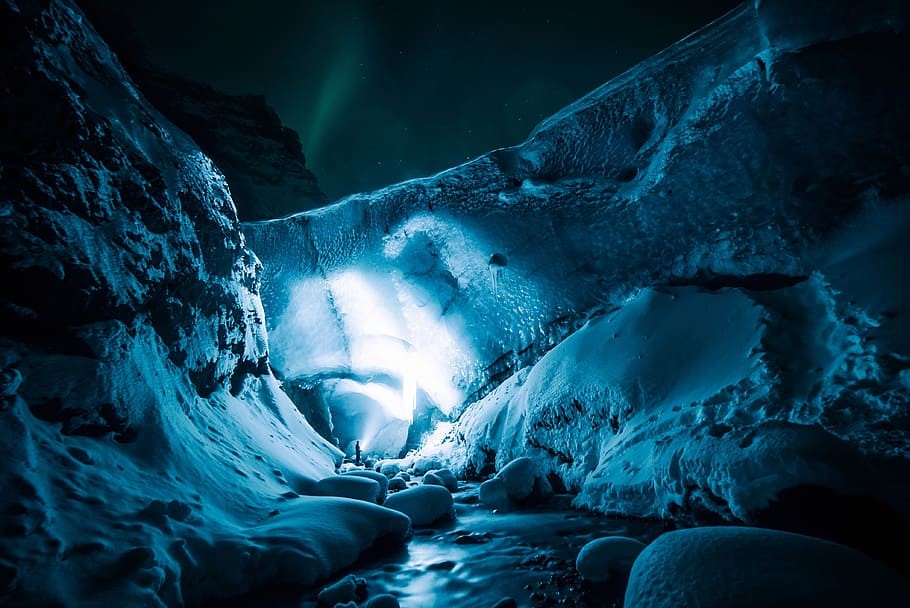 Source: Outside of an Icelandic ice cave. Pxfuel.
Source: Outside of an Icelandic ice cave. Pxfuel.
Icelanders might be accustomed to the unique natural wonders on their doorstep, but it is only recently that travellers from across the globe have discovered these glittering caverns for themselves.
Today, the chance to venture inside one of these sapphire chambers is one of Iceland’s biggest attractions and is often included as part of sightseeing tours around the country.
But before journeying further, let’s first delve into just exactly what an ice cave is, and just why they are so appealing for our international visitors.
What is an Ice Cave? Is it the same as a Glacier Cave?
An ‘ice cave’, specifically, can refer to any type of natural cavern that has ice as part of its permanent make-up. One prominent example of such would be Lofthellir cavern, located near the gorgeous Lake Mývatn in North Iceland.
This definition differs quite drastically from a ‘glacier cave’, which is actually a naturally formed chamber located within an ice sheet.
However, the terms are often used interchangeably, so most visitors are picturing the latter—glacier caves— when dreaming of future escapades in Iceland.
One surefire way of telling the difference between an ice cave and a glacier cave is to look at the colouring of the walls.
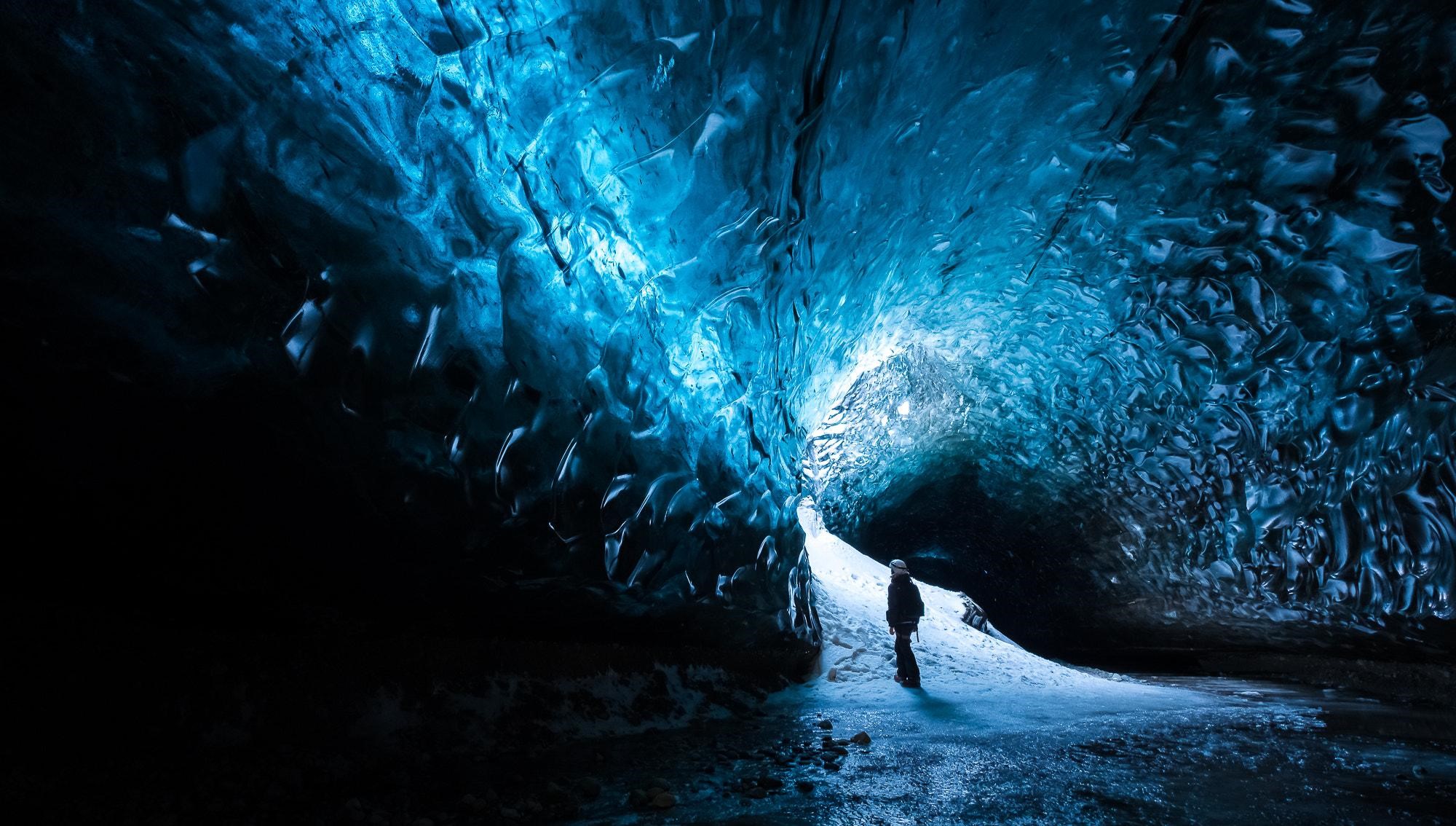 Source: Inside a glacier cave. Wikimedia. CC. Giuseppe Milo.
Source: Inside a glacier cave. Wikimedia. CC. Giuseppe Milo.
If, for instance, you are looking at icy stalagmites against a backdrop of dark black basalt, you’re probably inside an ice cave. If, on the other hand, you’re surrounded by translucent blue ice, then you’ve more likely found yourself exploring the depths of a glacier.
If you are hoping to see a specific type of cavern during your stay in the land of ice and fire, make sure to double-check with your tour provider before booking.
How does an Ice Cave form?
Glacier caves are formed as slightly-warmer meltwater pushes through the glacier ice, eventually creating passageways and chambers that come formed with perfectly smooth sides.
Meltwater occurs due to a number of factors, the first of which is sporadic geothermal activity—more than a common occurrence in Iceland.
Another is due to the shifting of tectonic plates, and the movement in the magma this causes. Again, this is not uncommon here considering the sheer number of stratovolcanoes shielded by glacial ice.
Some glacier caves in Iceland contain moulins, which are vertical circular shafts that rise up from inside the glacier to the surface. This is another example of how meltwater has built up in such a way as to shape the glacier into its visually appealing structure.
The final reason that meltwater occurs is due to the changing seasons. In some countries, ice caves remain entirely static throughout the year, but this is not the case in Iceland.
As the summer rolls in around April and May, much of Iceland’s frozen expanse thaws into a lush green paradise, creating an overflow of water.
This flooding is the main reason as to why some ice caving tours in Iceland are strictly seasonal, as accessibility is simply not possible.
An exception to this is the Katla ice caves, found near the village Vík í Mýrdal in South Iceland, as these can be visited throughout the year.
Is Ice Caving in Iceland safe?
Yes, ice caving in Iceland is safe, but only with a licensed tourism operator. One should never attempt to venture inside an ice cave alone.
Professional guides have the most experience with Iceland’s caverns, so are able to make sound judgements as to whether they are safe to enter at any given time.
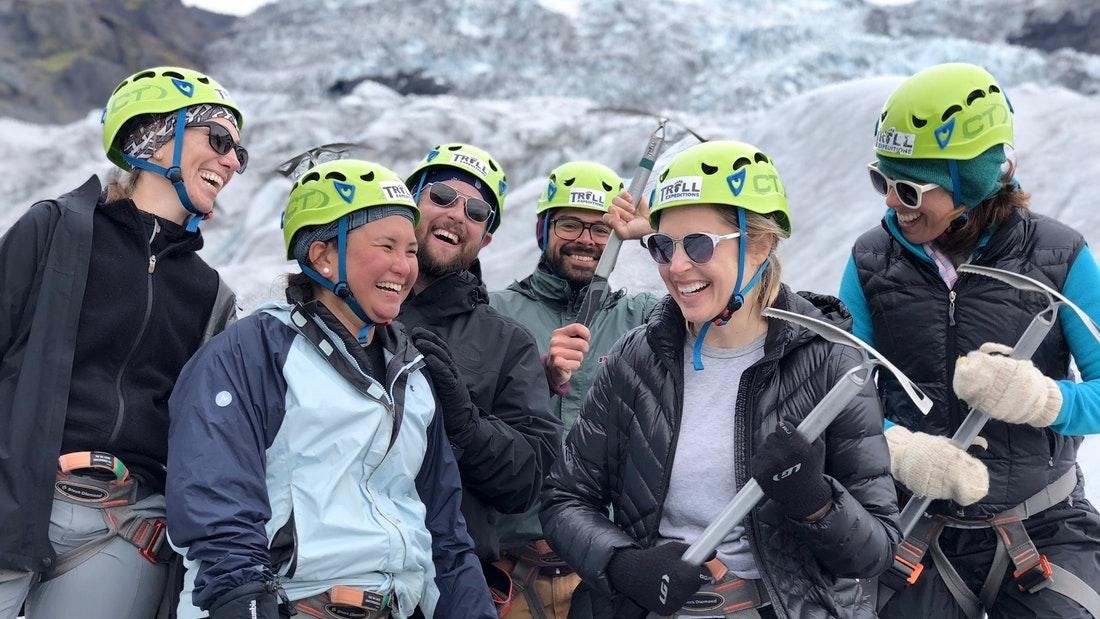 Source: 3-Hour Glacier Hike in Skaftafell Nature Reserve. Traveo Iceland.
Source: 3-Hour Glacier Hike in Skaftafell Nature Reserve. Traveo Iceland.
Tour operators also come equipped with all of the necessary equipment required to go ice caving. This includes helmets, flashlights, crampons and, if necessary, walking poles.
Where are the best Ice Caves in Iceland
Just where exactly the best ice caves in Iceland can be found is all a matter of opinion, though there are certain regions where more beloved caverns can be found.
Of course, not all of Iceland’s ice caves can be visited. Their accessibility depends largely on whether tour operators have chosen it as a preferred site for the season, or other factors including flood water and seismic activity.
With that in mind, we’ve stuck to listing the country’s most popular ice caves, as seen below.
Vatnajökull Ice Caves
Iceland’s best-known ice caves are, arguably, those found beneath Vatnajökull glacier, in South Iceland.
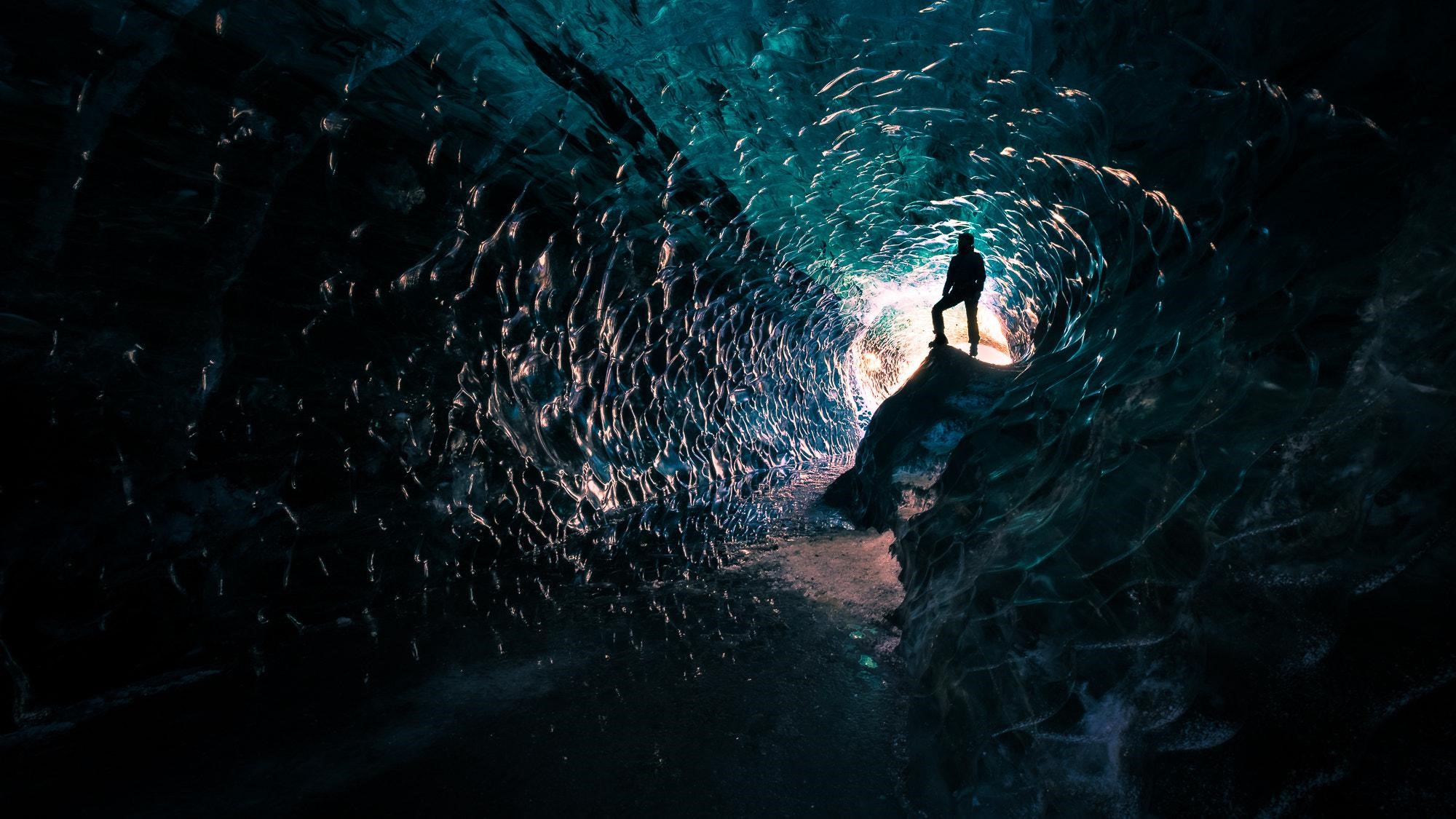 Source: Inside a glacier cave. Wikimedia. CC. Giuseppe Milo.
Source: Inside a glacier cave. Wikimedia. CC. Giuseppe Milo.
A striking aquamarine blue, these bejeweled hallways slope and curve elegantly with nature’s hand, creating a truly fantastical locale straight from the pages of literature.
For this reason, the Vatnajökull glacier caves are a darling among landscape photographers, all of whom are competing for the most exquisite shot.
Regardless of their efforts, no photograph will ever do justice to the delicate nature and heavenly composition of these caves.
Like the rushing falls of Niagara, or the towering cliff sides of the Grand Canyon, Vatnajökull’s glacier caves must be seen to be believed.
Katla Ice Caves
As mentioned previously, Katla’s ice caves can be visited regardless of the season, and make for a fantastic stop for guests travelling in South Iceland.
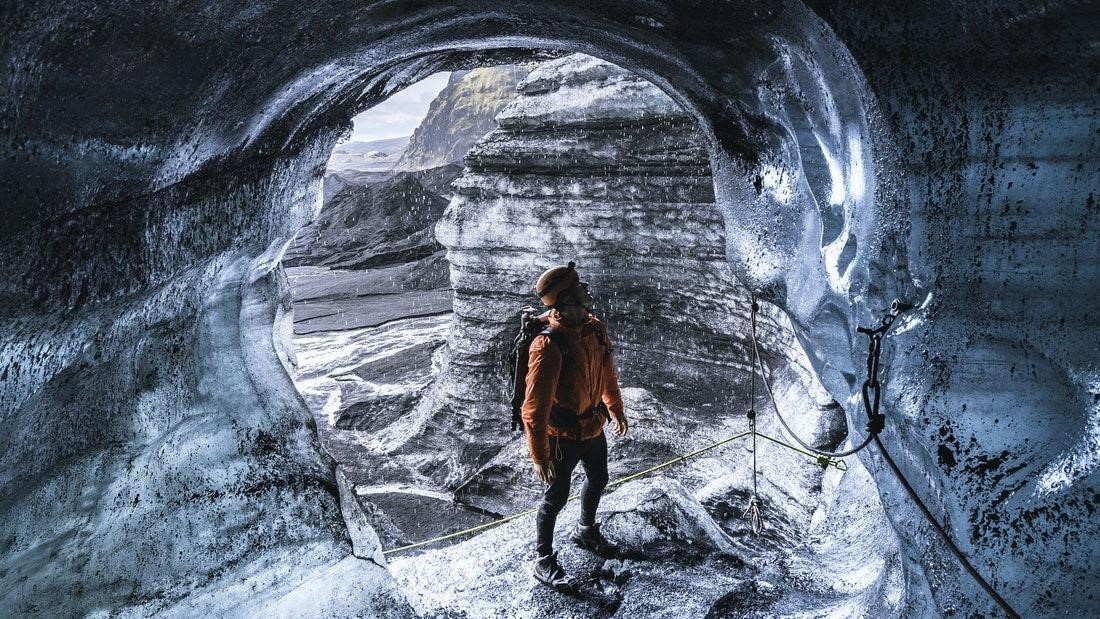 Source: Katla Ice Cave in South Iceland | Available All Year Round. Traveo Iceland.
Source: Katla Ice Cave in South Iceland | Available All Year Round. Traveo Iceland.
Katla is an active volcano found nearby to the coastal village Vík í Mýrdal, and is covered by the glacier, Mýrdalsjökull.
Upon entering Katla ice caves, guests are at once privy to the layers of black ash trapped beneath the ice.
This gives the landscape a peculiar, yet dazzling shade, only adding to the sublime beauty of this gorgeous glacial region.
On top of that, you will likely see enormous moulins breaking to the surface, as well as all varieties of ice sculptures and tunnels.
Langjökull Ice Tunnel
Langjökull is Iceland’s second-largest glacier, and the closest found to the capital, Reykjavík. The ice tunnel itself is not a natural feature but was drilled out deliberately for the purpose of hosting visitors, starting in 2015.
To arrive at the ice tunnel, guests first take a ride in a 4×4 snowcat vehicle that ascends the glacier’s dramatic slopes. Others choose to take a snowmobiling tour to the top, only adding new levels to their adventure.
Inside the ice tunnel, guests will discover a ready-made ice chapel, lit up by tiny LED lights, where there are frozen sculpted benches upon which to sit.
For anyone looking to discover the truly gargantuan nature of this ice cap, a visit to the Langjökull ice tunnel is a must.
Lofthellir Ice Cave
Found nearby to Lake Myvatn, Lofthellir is an ice cave, rather than a glacier cave, so expect dark tunnels and jagged footpaths upon entering.
The cave’s biggest draw is the icy stalagmites and stalactites that droop from the floor and ceiling respectively.
A dramatic staircase leads into this subterranean paradise, where guests will discover all manner of strange and captivating ice sculptures. Be aware; some climbing and clambering around will be necessary to make the most out of your experience.
Make sure not to miss out on this exciting cavern if you’re planning on exploring North Iceland anytime soon.
How can you experience an Ice Cave in Reykjavík
Some visitors do not have that much time to spare in Iceland and may find themselves restrained to the capital, Reykjavík.
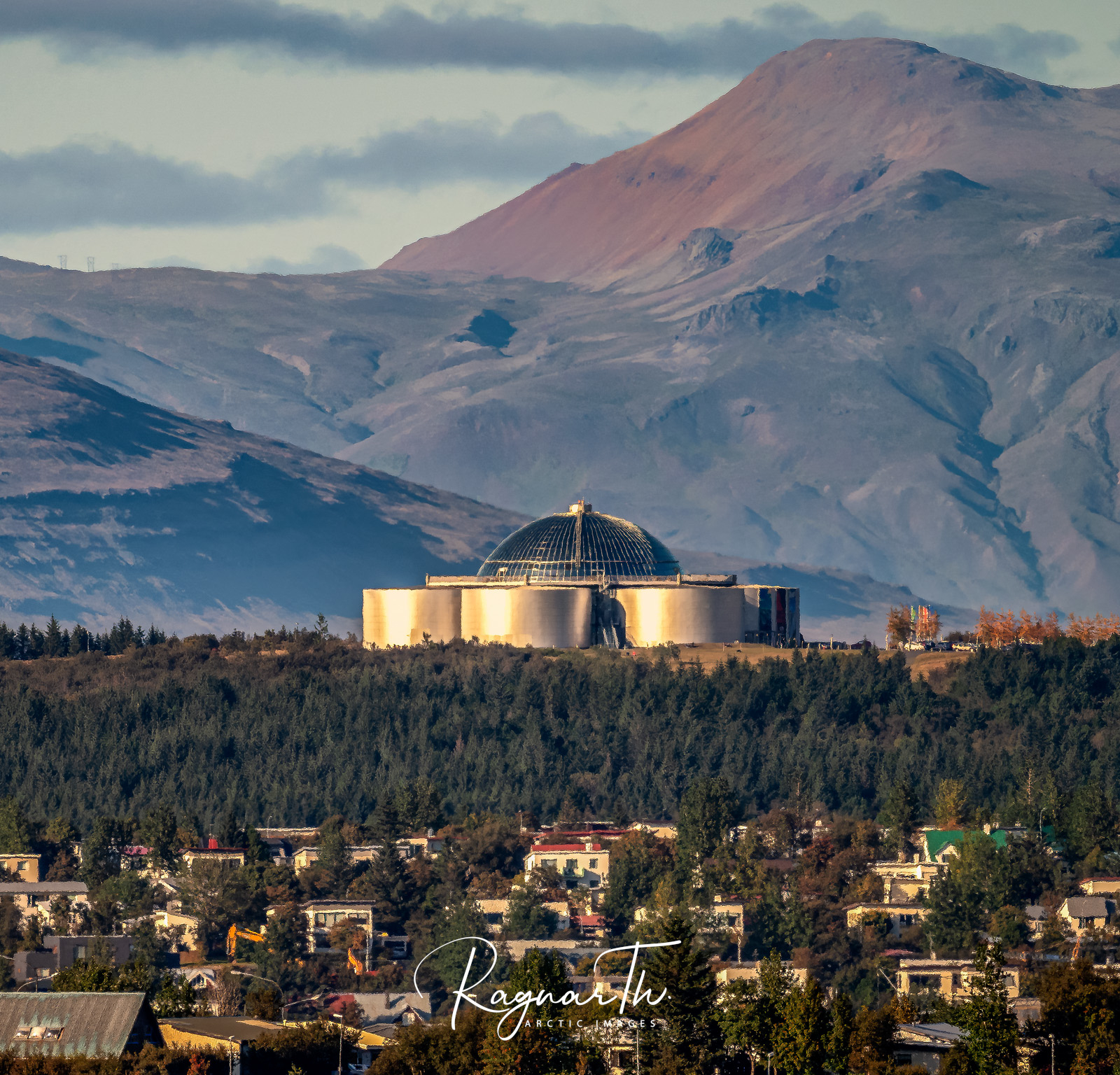 Source: Perlan Museum. CC. Perlan Facebook
Source: Perlan Museum. CC. Perlan Facebook
While there are no natural ice caves that can be found within walking distance of the city, the iconic landmark, Perlan Museum, boasts the next best thing.
Perlan is poised on the pine-strewn slopes of Öskjuhlíð hill, instantly recognizable thanks to its dome-shaped observation deck and renovated water storage tanks.
Perlan’s Ice Cave Exhibition – Wonders of Iceland
While the museum’s Wonders of Iceland exhibition is a treat for the family all around, it is its ice cave exhibition that stands apart.
Perlan’s artificial cave is the first attraction of its kind in the world. It comprises of a large ice tunnel—measuring 100 meters in total—which required the use of 350 tons of snow from the Icelandic mountains to build.
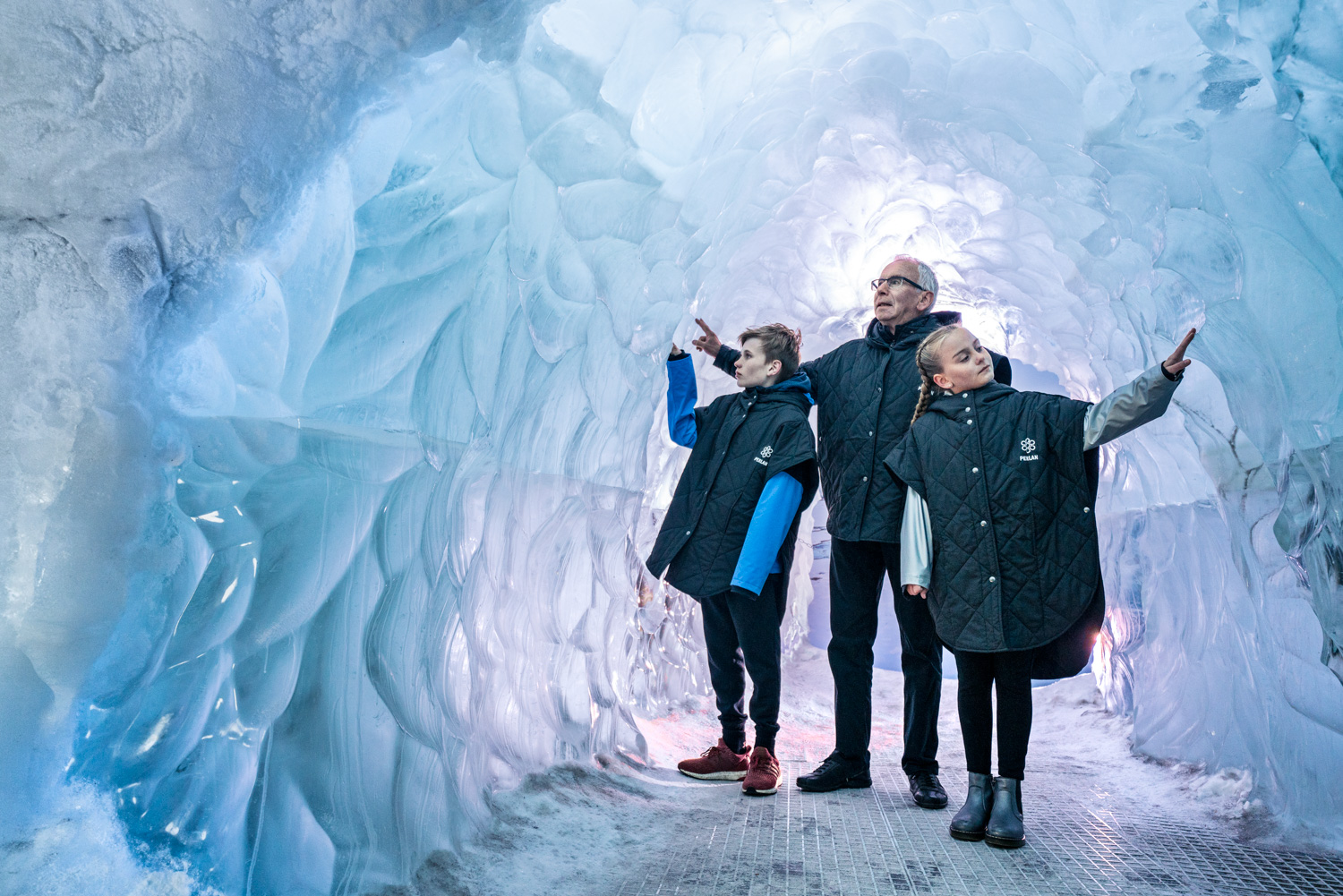 Source: Perlan Museum Ice Cave. CC. Perlan Facebook.
Source: Perlan Museum Ice Cave. CC. Perlan Facebook.
As such, visitors stepping into this refrigerated passage can feel comfortable knowing they are surrounded by authentic elements from Iceland’s nature.
The experience of stepping inside is complemented by interactive exhibitions that provide more information about glaciers in Iceland.
Perlan does not shy away from the worrying issues that these majestic natural features face, delving into the specific threats posed by global warming, and the consequences we as people should suffer if we do not take heed.
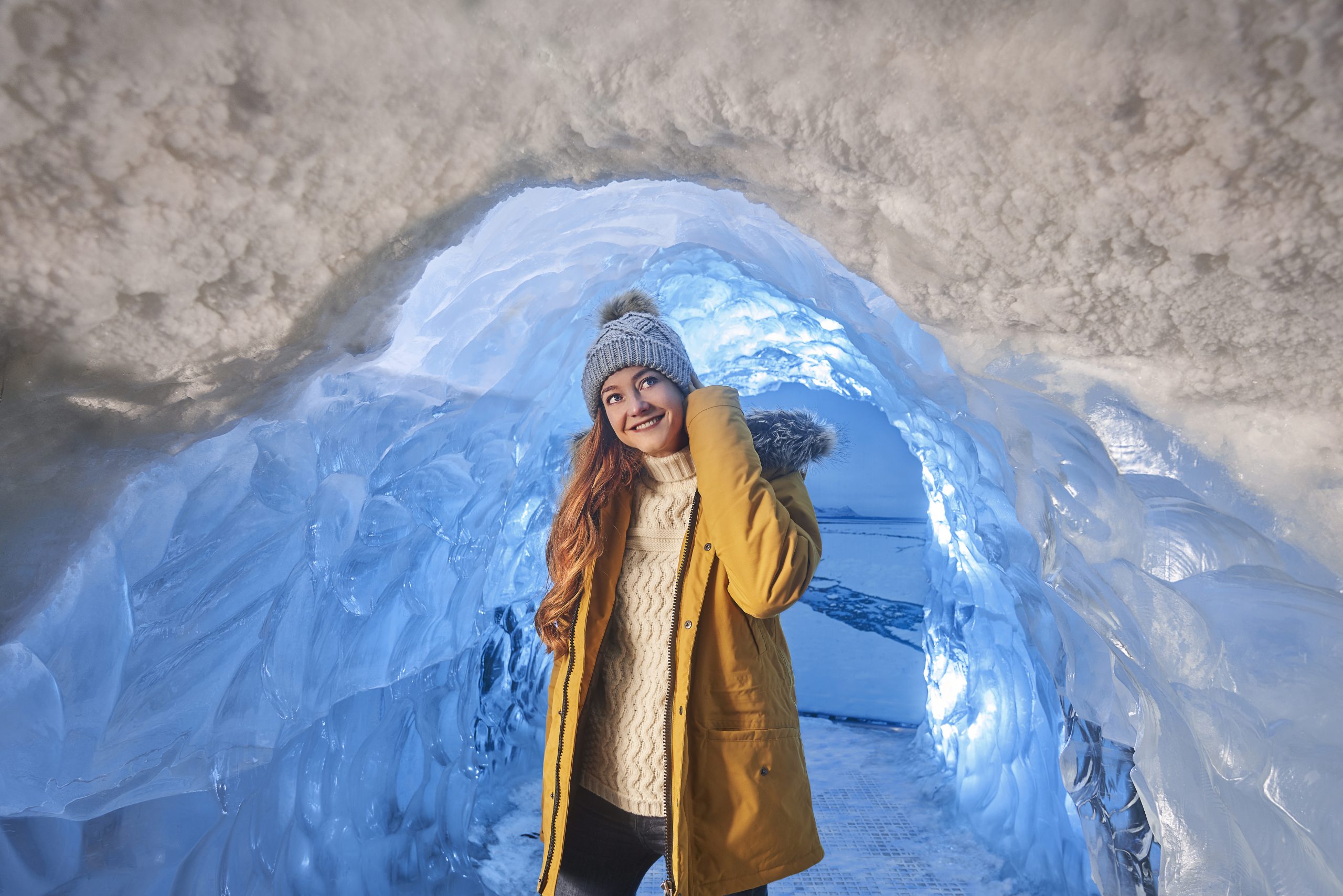 Source: Perlan Museum Ice Cave. CC. Perlan Facebook.
Source: Perlan Museum Ice Cave. CC. Perlan Facebook.
But, we’ll go into all that a little further into the article.
Other Exhibitions in Wonders of Iceland at Perlan Museum
To divert from the topic of ice caves for one moment, Perlan Museum offers a wealth of other fun and informative attractions that make paying a visit more than worthwhile.
Other parts of Perlan’s Wonders of Iceland exhibition include an accurate reconstruction of the Látrabjarg bird cliffs, famously located in the Westfjords.
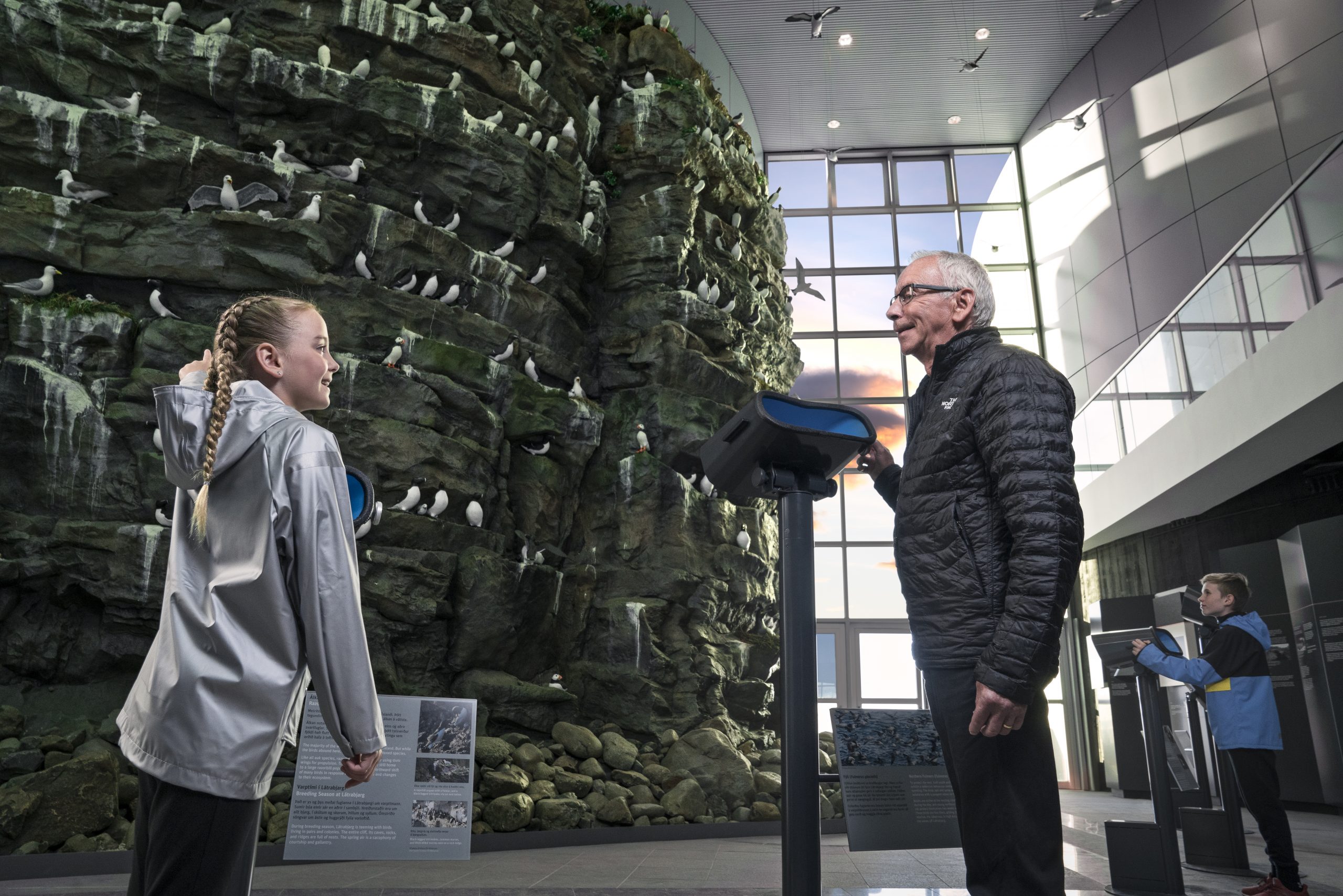 Source: Perlan Museum Bird Cliffs. CC. Perlan Facebook
Source: Perlan Museum Bird Cliffs. CC. Perlan Facebook
Aside from its gorgeous bustling wildlife, which includes nesting puffins, guillemots, and even the occasional Arctic Fox—Látrabjarg marks Europe’s westernmost point, making it a worthwhile stop if for that fact only.
Perlan’s faithful adaptation of this epic site adds virtual augmentation to the mix, allowing guests to feel as though they are peering right over these staggering Westfjords’ cliffsides.
For those looking to learn more about Iceland’s fascinating geological make-up, look no further than the Forces of Nature exhibition.
Through a series of display boards, photography and video, visitors will come to understand more about the volcanoes, earthquakes, and tectonic movements that have shaped this island over millions of years.
Another two brilliant exhibitions offered by Perlan Museum are its planetarium and Northern Lights show.
 Perlan Museum Planetarium’s Aurora Show. CC. Perlan Facebook
Perlan Museum Planetarium’s Aurora Show. CC. Perlan Facebook
Utilizing a high-tech 8K projector paired majestically with surround sound, viewers will watch an award-winning documentary production that shows Iceland’s cosmos at its finest.
Finally, guests are invited to take part in another cinematic journey, one that dives beneath the waves of Icelandic coastal waters.
Through fantastic underwater footage, you’ll learn about the whales, dolphins, seals and other fascinating marine life that calls this island home.
To learn more about how essential water is as part of Iceland’s make-up, the Icelandic Museum of Natural History hosts an exhibit dedicated to this country’s gorgeous rivers and lakes.
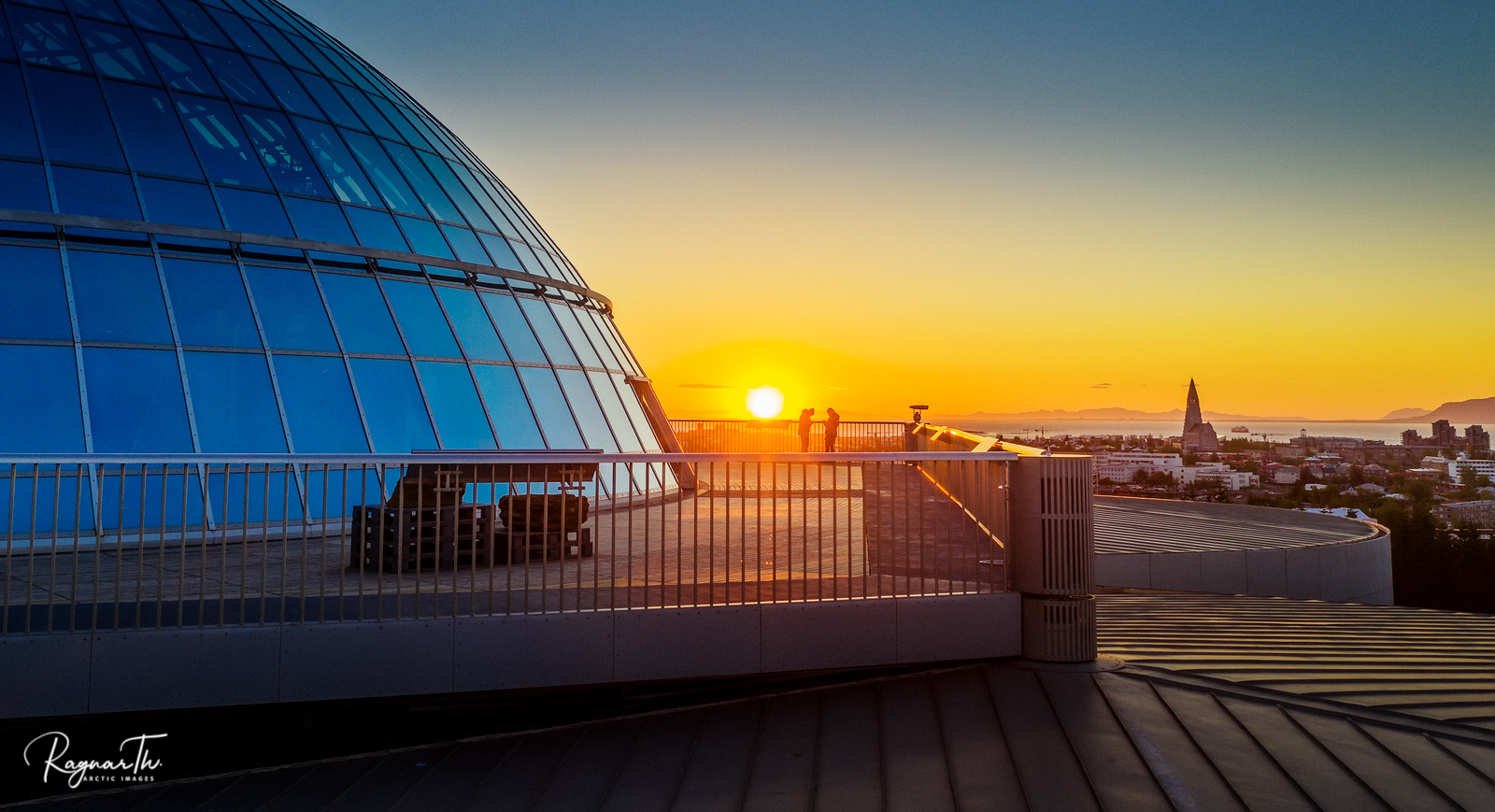 Perlan Museum Observation Deck. CC. Perlan Facebook
Perlan Museum Observation Deck. CC. Perlan Facebook
After visiting Perlan’s ice cave—and, naturally, its other brilliant exhibitions—it is highly recommended that you discover the 360-degree observation deck that has long served as one of the capital’s best viewpoints.
From here, you will have staggering views over the epic slopes of Mount Esja, the kaleidoscopic tin rooftops of Reykjavík, and the glittering blue waters of Faxaflói Bay.
There truly is no better way of taking in both the city and the incredible natural scenery that surrounds it.
Glaciers in Iceland & Historical Changes
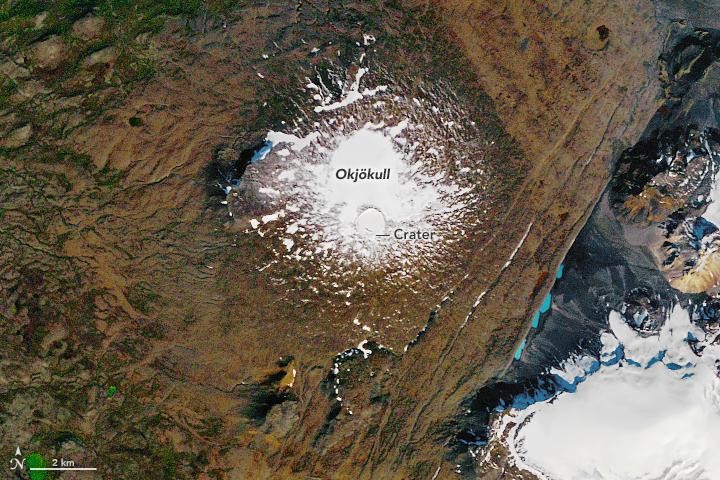 Source: Okjökull, photographed September 14, 1986. Earth Observatory. NASA.
Source: Okjökull, photographed September 14, 1986. Earth Observatory. NASA.
Climate change is an omnipresent threat worldwide, but its effects have already been measurably observed in Iceland.
Okjökull (Ok glacier) is the best-known example, having lost its status in 2014 as a direct consequence of a steadily warming climate.
The density of the ice sheet had depleted to such an extent that Okjökull no longer fit the specific requirements of being officially categorized as a glacier.
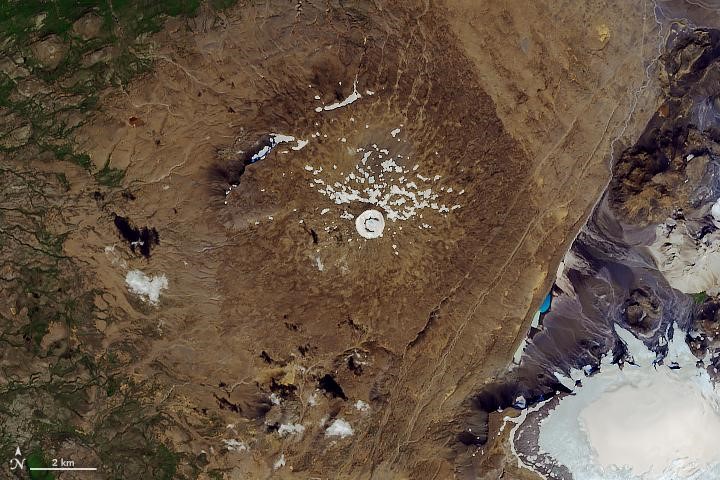 Source: Okjökull, photographed August 1, 2019. Earth Observatory. NASA.
Source: Okjökull, photographed August 1, 2019. Earth Observatory. NASA.
This former giant has since been the subject of a documentary film, ‘Not OK’ (2018), directed by anthropologists Dominic Boyer and Cymene Howe of Rice University.
The filmmakers proposed that a commemorative plaque be placed at the site of the loss, to increase awareness of global warming. This was achieved in a ceremony attended by Icelandic prime minister Katrín Jakobsdottir in 2019.
A short note, written in Icelandic and English, titled “A letter to the future” was contributed to the plaque by author Andri Snær Magnason.
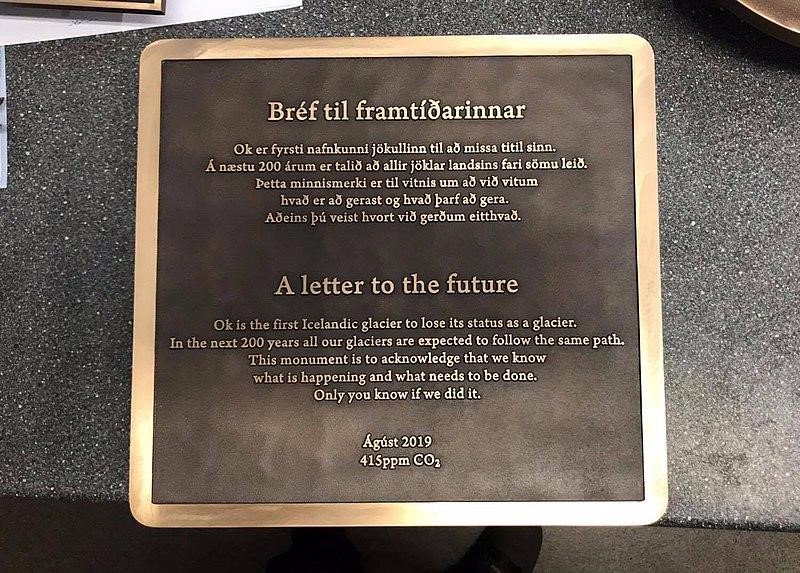 Source: Wikimedia. CC. Rice University.
Source: Wikimedia. CC. Rice University.
In part, it reads “[…] this monument is to acknowledge that we know what is happening and what needs to be done. Only you know if we did it.”
Okjökull is not the last of Iceland’s glaciers that will feel the wrath of a climate out of control, but it will hopefully be the first that makes us, as a species, see clearly the future we hope to live in.
Final Thoughts on Ice Caves in Iceland
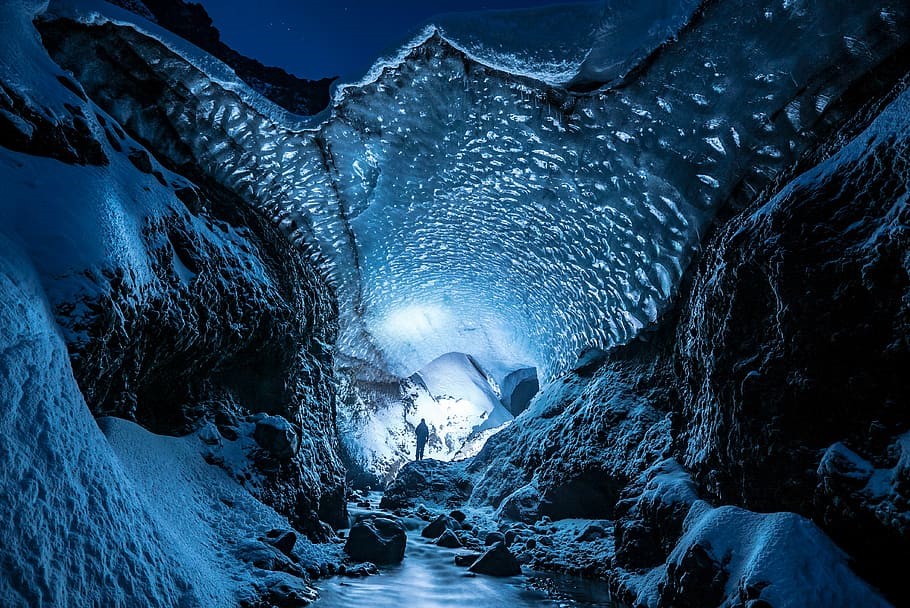 Source: A man stands outside an Icelandic glacier cave. Piqsels.
Source: A man stands outside an Icelandic glacier cave. Piqsels.
By taking part in a glacier hike or ice caving excursion, you will have the opportunity to witness these marvels of nature up close.
Personal adventures tours amid these icy giants will open your eyes to their beauty and complexity, and will surely raise their value to you as an individual.
After returning home, you’ll be eager to share your intrepid tales of life under the ice.
This enthusiasm for Iceland’s landscapes will only contribute to raising climate awareness, as well as leaving you with fantastic memories of your time spent in the land of ice and fire.
Author: Mike Chapman
Explore more Wonder of Perlan here.
